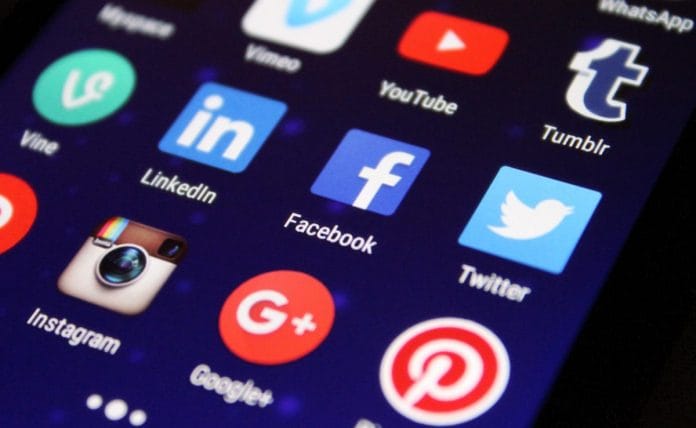Besides amplifying Dalit protests, social media has lowered the barriers to entry into the political discourse for Dalits.
ThePrint is publishing articles on Dalit issues as part of Dalit History Month.
Earlier this month, the nationwide Dalit protests against the dilution of the prevention of atrocities Act by the Supreme Court were coordinated in less than two weeks and without any central leadership, mostly thanks to Dalit networks on WhatsApp and Facebook.
The digital world is opening new avenues for Dalit politics and connecting the youth of the community in new ways. Protests, which in the past remained restricted to a few urban pockets, can now swiftly reach multiple cities. Is social media a game changer for Dalit politics? I argue that its transformative effects notwithstanding, Dalit politics’ digital footprint remains limited.
Digital Dalits
On Dalit websites and discussion forums, members of the community from across India and abroad are building their own public sphere to exchange ideas, share information, and present a perspective on issues from their vantage points. Round Table India, Dalit and Adivasi Students’ Portal, Ambedkar.org, and Savari have emerged as some of the prominent Dalit websites. Dalit Camera is a YouTube channel devoted to the coverage of community issues. There are also a number of Facebook groups as well as Twitter accounts that share commentary and news on Dalits, commemorate histories and leaders, discuss Dalit literature and cultural material, and mobilise their opinions in India and abroad. Across India, numerous Dalits have joined WhatsApp groups to discuss their social and political concerns.
At times, as safe spaces, these platforms allow Dalits to express opinions that they are otherwise reluctant to share directly with higher-caste friends or colleagues. The effects of this connectivity are strengthening a national Dalit consciousness and democratising Dalit politics.
National Dalit consciousness
Dalit political assertion in different parts of India has often failed to spread beyond linguistic and cultural boundaries to turn into a national movement. Today, the imagination of the Dalit community has begun to expand beyond the confines of the neighborhood, city, and the state. Exposed to online Dalit discourse from different parts of the country, youths have begun to imagine themselves as part of a larger community across language and cultural divides.
The protests sparked by Rohith Vemula’s suicide in 2016 on the campus of Hyderabad University reflected this pattern. His suicide note went viral, and the outpouring of anger in response to his death led to nationwide protests across university campuses. Recent Dalit protest movements led by Jignesh Mevani and Chandrashekhar Azad in Gujarat and Uttar Pradesh, respectively, instead of remaining confined to their states of origin, attained national prominence and widespread following because of pictures and videos released by organisers on online platforms.
Democratizing Dalit politics
Besides amplifying Dalit protests, social media has lowered the barriers to entry into the political discourse for members of the community. Thus far, political parties have held the veto on the content and timing of Dalit issues. Digital politics has disrupted this pattern.
By highlighting acts of atrocities and discrimination against Dalits, as well as spreading the word on Dalit protests, digital activists put pressure on both Dalit and multi-caste parties. For example, the Hindutva connections to anti-Dalit violence in Una, Gujarat, and Bhima-Koregaon, Maharashtra, produced a strong anti-BJP backlash among Dalits. Social media was flooded with the commentary on Hindu nationalism’s historical antipathy towards the Dalit cause. As a result, the pro-Dalit image that the BJP has worked very hard to cultivate stands damaged across the country.
Not regimented behind a single party, Dalit online commentary is also not shy of critiquing prominent Dalit politicians. Mayawati and Ram Vilas Paswan are criticised when they fail to stand up in support of Dalit protests. To add to it, instead of waiting for a call from prominent Dalit leaders, social media-coordinated, leaderless protests are beginning to appear. The power to set the Dalit political agenda, then, has begun to shift from the parties to Dalit voters and activists.
Limitations of digital empowerment
Without a doubt, social media has enhanced the voice of Dalits in the public discourse, but a few lessons offered by experiences of digital empowerment from the rest of the world require consideration.
One such lesson suggests that unequal access to the digital universe can privilege some voices over others. The majority of Dalits remain untouched by the growth of social media. Three-fourths of Dalits, even today, reside in rural India, and among those who are urban residents, many lack internet access. The digitally empowered Dalits are more likely to be city dwellers and with a higher socioeconomic status. With the availability of cheaper smart phones, these constraints will hopefully lift.
For all their advantages, digital ties are limited in their durability; this is the other lesson worth remembering. Unless people interact face-to-face and form personal bonds while working together, they are unlikely to be able to sustain collective action with regularity. Digital collectives, then, inform the Dalit agenda, but they cannot replace grassroots-level organisations. Dalit movements, activists, politicians, and parties will, therefore, continue to remain at the centre of Dalit politics.
Amit Ahuja is an associate professor of political science at University of California, Santa Barbara. He is the author of the forthcoming book ‘Mobilizing the Marginalized: Dalit Movements and Parties in India (OUP)’, this autumn.
Read more from ThePrint’s Dalit History Month archives.






